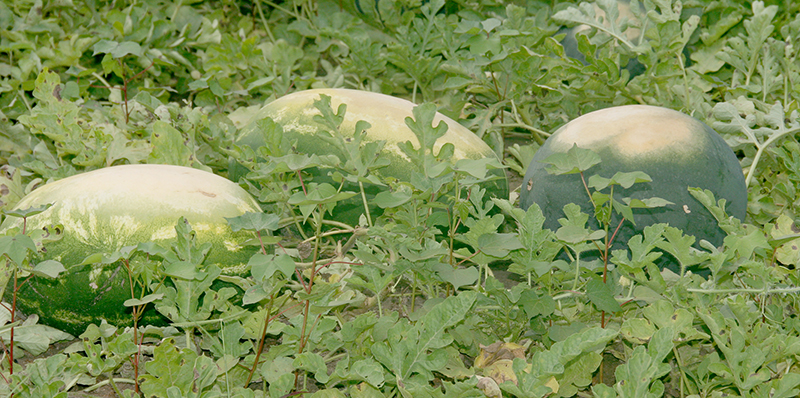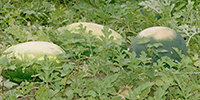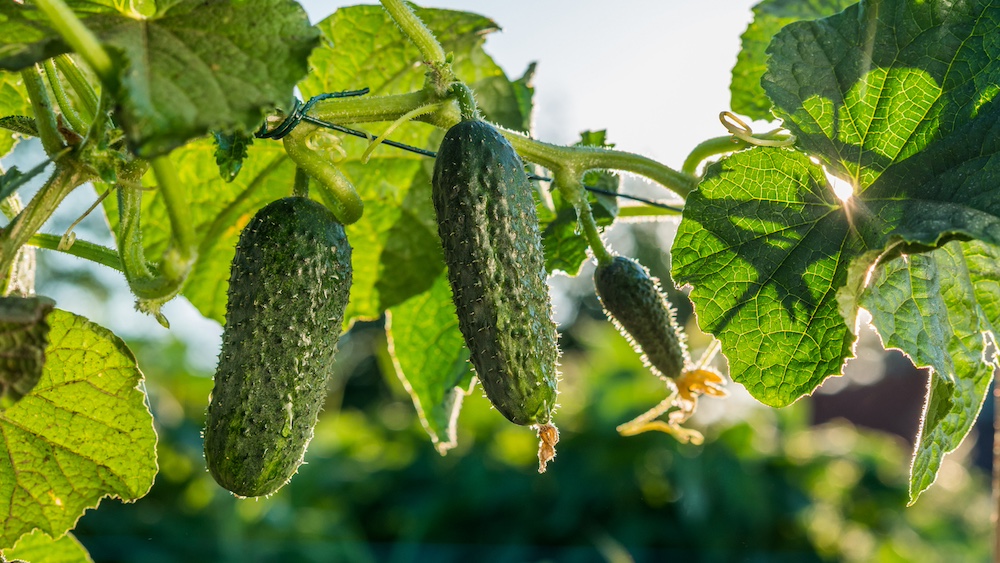Whether protecting watermelons from the scalding summer sun or helping plants produce bigger fruit, maintaining healthy vines is a top priority for Georgia growers, especially when farm workers continuously pick from the same fruit bed.
“There are multiple reasons that watermelon farmers think about vine protection. Healthy vines supply more energy and photosynthate to fruit,” said University of Georgia Cooperative Extension vegetable specialist Tim Coolong.
Protecting watermelon vines also increases the length of harvests. Instead of picking two or more times in a season, a farmer may pick four times in the same field, which increases yields and profits, Coolong said.
Vines also help control sunburn. If vines aren’t strong when temperatures are at their highest during the harvest season, they aren’t able to protect the watermelon fruit from being exposed, which leads to sunburn damage.
Coolong stresses that the best way to protect vines is to turn them back in drive rows. Watermelon fields are set up in several groups of five or six beds that are divided by larger drive rows, which make the vines accessible by farm equipment. Drive rows allow the grower to spray vines and enable harvest wagons or buses to get into the field without running over most vines. Vines in the rows located next to the drive row may grow into the road, however, which makes them vulnerable to being run over.
“For some of our larger growers, it can be prohibitively expensive to turn vines by hand, but most of our medium-sized growers have their crews go into the fields and turn the vines in those drive rows so they’re not running over them,” Coolong said. “Also, if (the plant) sets fruit in those drive rows and you run them over, and you have a drive row every fifth or sixth row, you’re talking maybe 10 percent of your fruit that could potentially be damaged.”
In Coolong’s research trials on the UGA Tifton Campus, watermelon vines are turned back once a week for a month or more near harvest.
“It really helped with the quality of our harvest on that third picking. Where we used to have a lot of small fruit that may not be worth picking, now we’re still maintaining size through that third pick,” he said.
Coolong also stresses the importance of workers not trampling vines when they walk through a field.
“As a grower, your workers are trying to move through the field as fast as they can to be as efficient and as productive as they can. That doesn’t necessarily go hand in hand with maintaining vine quality, so it’s a challenge to not beat up the vines, but get through the fields in a quick fashion,” Coolong said.
The watermelon market in Georgia starts in early June and usually concludes a week after July 4. Georgia watermelon was worth more than $124.5 million in 2015, according to the Georgia Farm Gate Value Report, published by the UGA Center for Agribusiness and Economic Development.








